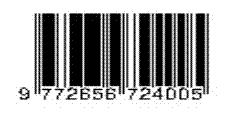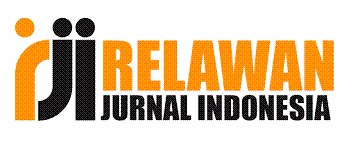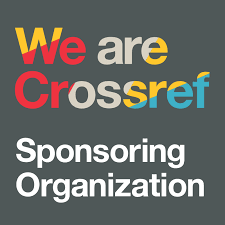Development of Statistical Literacy Questions for Prospective Mathematics Teachers
Abstract
Statistical literacy was one of the important abilities that must be possessed by prospective mathematics teachers in the era of society 5.0. This research was qualitative descriptive to develop statistical literacy questions for prospective mathematics teachers using indicators of the five bases of statistical literacy and PMRI principles. The questions were developed using a design research type of development study to see the validity and practicality of the questions. The research stages included the preliminary stage, and the prototyping stage (self-evaluation, expert review, one-to-one, and small group). As many as 13 prospective mathematics teachers participated in this study, in the one-to-one stage and the small group stage. Data were collected through walkthroughs, observations, interviews, and video recordings. Data were analyzed qualitatively to describe the results of each stage. The results showed that the statistical literacy questions developed were valid and practical. Validity was shown from the expert review stage which validates the content, construct and language aspects used in the questions. Practicality can be seen from the one-to-one and small group stages where students can work on the questions given. Further research was needed using more subjects to see the potential effects that emerge from this study.
References
Allen, C. E., Froustet, M. E., LeBlanc, J. F., Payne, J. N., Priest, A., Reed, J. F., Worth, J. E., Thomason, G. M., Robinson, B., & Payne, J. N. (2020). National Council of Teachers of Mathematics. The Arithmetic Teacher, 29(5), 59. https://doi.org/10.5951/at.29.5.0059
Andriatna, R., Kurniawati, I., & Wulandari, A. N. (2021). Profil Kemampuan Literasi Statistik Mahasiswa Calon Guru Matematika. Jurnal Pendidikan Matematika Dan Matematika FIBONACCI, Vol 7 No 1(Juni), 19–28.
Aziz, A. M., & Rosli, R. (2021). A systematic literature review on developing students’ statistical literacy skills. Journal of Physics: Conference Series, 1806(1). https://doi.org/10.1088/1742-6596/1806/1/012102
Ben-Zvi, D. (2020). Data Handling and Statistics Teaching and Learning. In S. Lerman (Ed.), Encyclopedia of Mathematics Education (2nd Editio, pp. 177–180). Springer. https://doi.org/10.1007/978-3-030-15789-0
Fernández, M. S., Pomilio, C., Cueto, G., Filloy, J., Gonzalez-Arzac, A., Lois-Milevicich, J., & Pérez, A. (2020). Improving skills to teach statistics in secondary school through activity-based workshops. Statistics Education Research Journal, 19(1), 106–119. https://doi.org/10.52041/serj.v19i1.124
Gal, I. (2004). Statistical literacy: meanings, components and responsibilities. The Challenge of Developing Statistical Literacy, Reasoning and Thinking, 47–78.
Gal, I. (2019). Understanding statistical literacy: About knowledge of contexts and models. Actas Del Tercer Congreso Internacional Virtual de Educación EstadÃstica, 1–15. http://digibug.ugr.es/bitstream/handle/10481/55029/gal.pdf?sequence=1&isAllowed=y
Garfield, J. B., & Burrill, G. (1997). Students analyzing data: Reserach of critical barriers. In Research on the role of technology in teaching and learning statistics (pp. 151–168). International Association for Statistical Education.
Heuvel-panhuizen, M. Van Den, Drijvers, P., Education, M., Sciences, B., & Goffree, F. (2014). Realistic Mathematics Education. In Encyclopedia of Mathematics Education (pp. 521–532). https://doi.org/10.1007/978-94-007-4978-8
Idris, K. (2019). Literasi Statistik Berbasis Konteks Budaya dan Keislaman : Perspektif Dosen dan Mahasiswa PTKI. Prosiding Seminar Nasional IItegrasi Matematika Dan Nilai Islami, 3(1), 357–362.
Kemdikbud. (2022a). Capaian Pembelajaran Matematika SD - SMA. Kementrian Pendidikan, Kebudayaan, Riset Dan Teknologi. https://guru.kemdikbud.go.id/kurikulum/referensi-penerapan/capaian-pembelajaran/sd-sma/matematika/fase-e/
Kemdikbud. (2022b). Kurikulum Merdeka. Kementrian Pendidikan, Kebudayaan, Riset Dan Teknologi. https://kurikulum.kemdikbud.go.id/kurikulum-merdeka/
Khaerunnisa, E., & Pamungkas, A. S. (2017). Profil Kemampuan Literasi Statistis Mahasiswa Jurusan Pendidikan Matematika Universitas Sultan Ageng Tirtayasa. AKSIOMA: Jurnal Program Studi Pendidikan Matematika, 6(2), 246. https://doi.org/10.24127/ajpm.v6i2.970
Moore, D. S. (1997). New pedagogy and new content: The case of statistics. International Statistical Review, 65(2), 123–137. https://doi.org/10.1111/j.1751-5823.1997.tb00390.x
Pusmendik. (2022). Asesmen Nasional. Webpage. https://pusmendik.kemdikbud.go.id/an/page/news_detail/asesmen-nasional
Rumsey, D. J. (2002). Statistical literacy as a goal for introductory statistics courses. Journal of Statistics Education, 10(3). https://doi.org/10.1080/10691898.2002.11910678
Sharma, S. (2017). Definitions and models of statistical literacy: a literature review. Open Review of Educational Research, 4(1), 118–133. https://doi.org/10.1080/23265507.2017.1354313
Sinaga, T. M. (2022, November 15). Mendidik Siswa Sebagai Aset Masa Depan Bangsa. Kompas.
Takaria, J., & Talakua, M. (2018). the Ability of Statistical Literacy Student Teacher Candidate in Terms of Prior-Ability on Mathematics. Jurnal Kependidikan: Penelitian Inovasi Pembelajaran, 2(2), 395–408. https://doi.org/10.21831/jk.v2i2.18768
Tessmer, M. (1993). Planning and Conducting Formative Evaluation: Improving The Quality of Education and Training. Kogan Page.
Tiro, M. A. (2018). Strategi Aksi Gerakan Nasional Literasi Statistika di Indonesia. Seminar Nasional Variansi (Venue Artikulasi-Riset, Inovasi, Resonansi-Teori, Dan Aplikasi Statistika), 2018, 1–21. https://ojs.unm.ac.id/variansistatistika/article/view/7193
Utari, R. S. (2017). Implementasi Nilai-Nilai Karakter dan Norma Sosiomatematik dalam Pembelajaran Matematika. Prosiding Seminar Nasional 20 Program Pascasarjana Universitas PGRI Palembang, November.
Watson, J. M. (2011). Foundations for improving statistical literacy. Statistical Journal of the IAOS, 27(3–4), 197–204. https://doi.org/10.3233/SJI-2011-0728
Weiland, T. (2017). Problematizing statistical literacy: An intersection of critical and statistical literacies. Educational Studies in Mathematics, 96(1), 33–47. https://doi.org/10.1007/s10649-017-9764-5
Wijers, M., & de Haan, D. (2020). Mathematics in Teams—Developing Thinking Skills in Mathematics Education. https://doi.org/10.1007/978-3-030-33824-4_2
Yackel, E. (2001). Explanation, Justification, and Argumentation In Mathematics Classroom. PME Conference, 1, 1–9.
Yackel, E., & Cobb, P. (1996). Sociomathematicsal Norms, Argumentation, and Autonomy in Mathematics. Journal for Research in Mathematics Education, 27(4), 458–477.
Zulkardi. (2002). Developing A Learning Environment On Realistic Mathematics Education For Indonesian Student Teacher (Doctoral disertation, University of Twente, Enschede). 1–218.

























